|
|
NYSG's Social Media Review: Early April 2017
By Paul F on Mar 30, 2017 at 11:29 PM
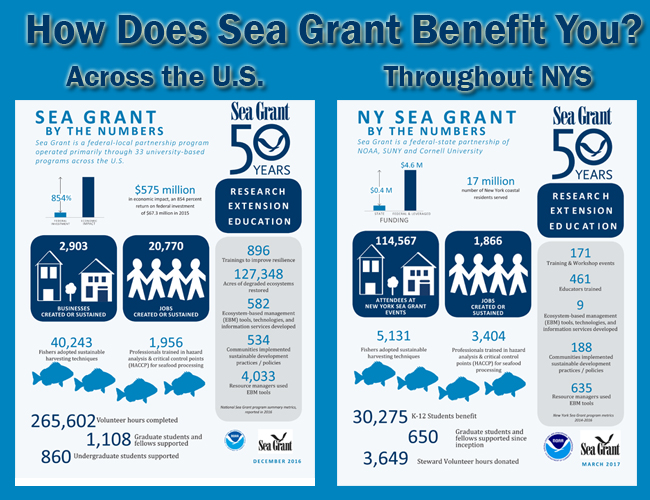
As featured in late March via The Waterfront Alliance's "WaterWire" e-newsletter, The National Sea Grant College Program, which funds 33 coastal research and education programs at colleges, universities, and institutes across the U.S., is on the chopping block, part of massive cuts proposed by the Trump administration to the National Oceanic and Atmospheric Administration.
To learn more about the concern and how you can raise your voice in support, see "Save Sea Grant."
One quick and easy way is to contact your local Congressperson and Senator and convey your support of Sea Grant.
So, how does Sea Grant benefit residents throughout the U.S? For 50 years, NOAA Sea Grant has been putting science to work for America's coastal communities.
Read why Sea Grant is a smart investment in our nation's coastal economy via a two-page fact sheet (pdf) and "By The Numbers" one-page stats sheet (pdf).
Also, there's the 44-page 2016 Biennial Report to the U.S. Congress, "The State of Sea Grant" (pdf).
And, in New York, check out our own "New York Sea Grant: By The Numbers" one-page stats sheet (pdf), "What is NYSG?" two-page introduction to our state program (pdf) as well as our year-by-year "Success Stories," www.nyseagrant.org/successstories.
For the more visually-inclined, see NYSG's blog post featuring both a 30-second trailer and 10-minute video highlighting how Sea Grant has been providing science to serve America's coasts for over 50 years.
Top 12 Trending News Stories from NOAA's New York Sea Grant ...
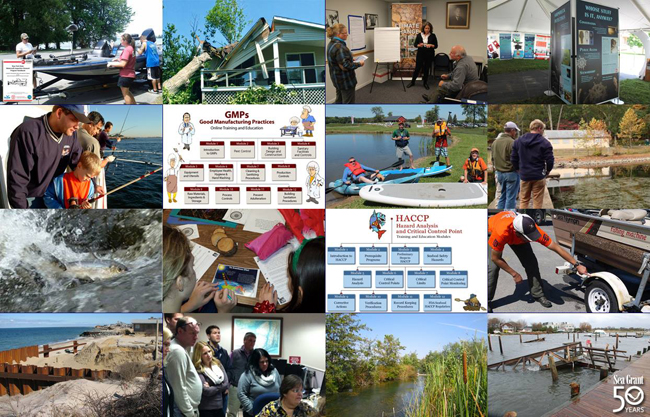
(1) SEA GRANT MAKES AN IMPACT IN NYS >>> What kinds of impacts does Sea Grant have in New York State? A series of fact sheets for 19 of our program's 2016 projects point to a number of key extension and education efforts and initiatives, including: Seafood safety education; Promoting resiliency in coastal communities; Engaging minority youths in hands-on science; and Improving universal access to waterfront recreation: http://ow.ly/HUJ030auBAs.
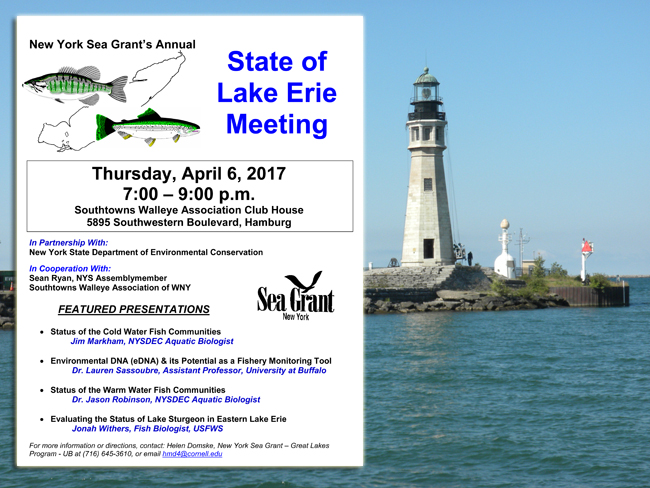
(2) STATE OF LAKE ERIE >>> Our annual "State of Lake Erie" will be held on Thursday, April 6th at the Southtowns Walleye Association’s clubhouse in Hamburg, NY. Featured presentations at this free event include the status of cold and warm-water fish communities, eastern Lake Erie Lake Sturgeon and using Environmental DNA as a fish monitoring tool | Flyer (pdf).

(3) SEAFOOD EAT FOOD >>> Registration is open for our free Seafood Sustainability workshop on Wednesday, June 14th. This day on Long Island's North Fork features a visit to a shellfish hatchery and oyster farm and includes pick up and drop off at Suffolk County Community College in Selden, NY. | Flyer (pdf), Sign-up: http://ow.ly/uPhz30auBHx.
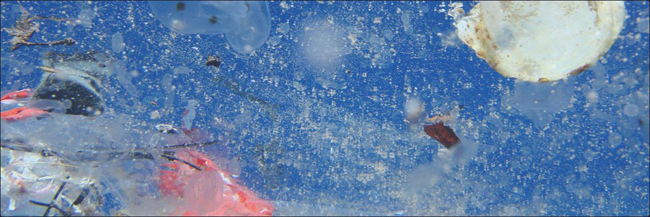
(4) AQUATIC CLEAN-UP >>> NYSG is co-sponsoring a free screening of the documentary film "A Plastic Ocean" at Cornell Cinema on April 24th. The film investigates how our addiction to plastic is impacting the food chain and how that is effecting every one of us through new and developing human health problems: http://ow.ly/ut6k30auBLo.
Watch the trailer at www.plasticoceans.org/watch-trailer.
The majority of marine debris found around the world is made of plastic and can range from microbeads smaller than a sesame seed up to an 11-ton mass of abandoned fishing nets. Over time these plastics break down into what is called microplastics (smaller than five millimeters in size). More from Sea Grant at www.nyseagrant.org/microplastics.

(5) STEWARDSHIP AND YOU >>> Long Island Sound Study reminds that there are a handful of opportunities to volunteer with them and partner organizations throughout 2017 in New York and Connecticut to help restore and protect Long Island Sound: http://ow.ly/QyL430auBNQ.
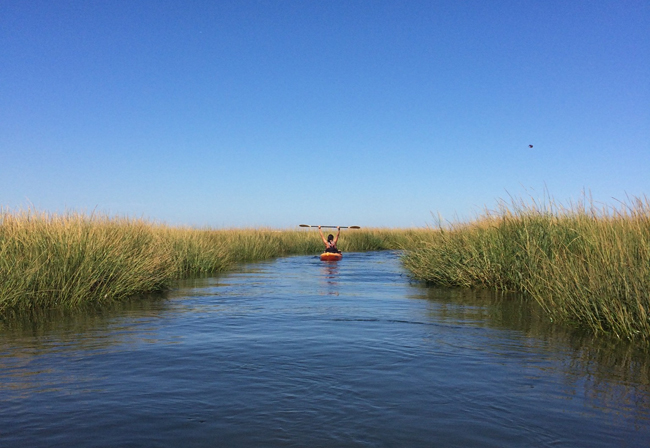
(6) JAMAICA BAY >>> A new resource site spotlights Jamaica Bay, a heavily urbanized and densely populated watershed on Long Island's South Shore. This estuary, which is physically separated from the Atlantic Ocean by the barrier beach that's home to the Rockaways, is one of the most complicated human landscapes in the world: www.nyseagrant.org/jamaicabay.
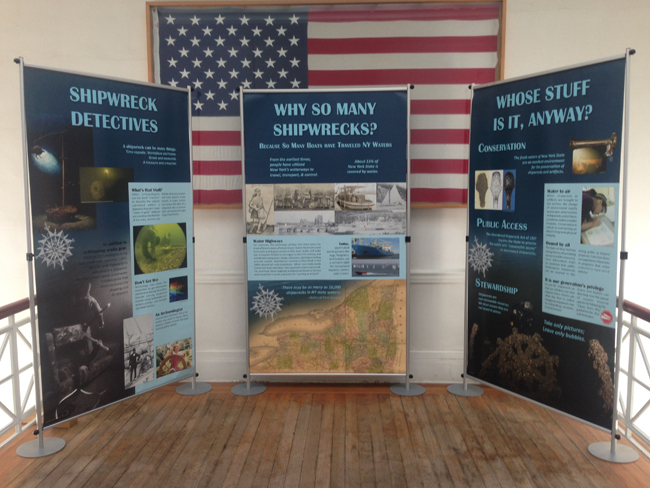
(7) SEE THE SHIPWRECKS UP-CLOSE >>> Sea Grant's Great Shipwrecks of New York’s ‘Great’ Lakes Exhibit which includes panels on Lake Champlain and Lake George shipwrecks, marks its fourth year in transit with a visit to Plattsburgh, NY now through April 28th, 2017: http://ow.ly/rzMM30auBQH. To mark the occasion, a reception was held at Plattsburgh City Hall on Tuesday, March 28th: http://ow.ly/jzAv30auBSP.
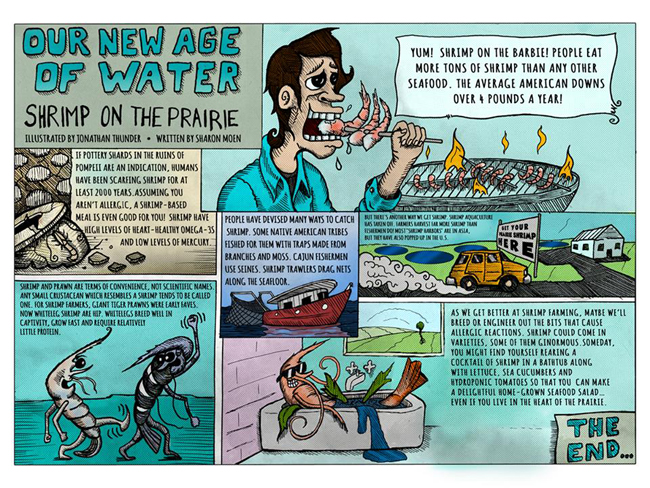
(8) SUPPORT FOR SUSTAINABLE AQUACULTURE >>> Funding is available via Sea Grant programs nationwide to help increase sustainable #aquaculture efforts. NYSG offers submission information for this and other opportunities via its online portal, www.nysgproposal.org. There, you will also see detailed information on eligibility requirements, descriptions and guidance on how to apply for "NOAA Sea Grant's 2017 Aquaculture Initiative: Addressing Impediments to Aquaculture Opportunities" (Deadline: April 4th @ 5 pm ET).
Outside of New York, you can find information on how to apply through your local Sea Grant Program via the National Sea Grant Program's Web site: http://ow.ly/DOMn309yerW.
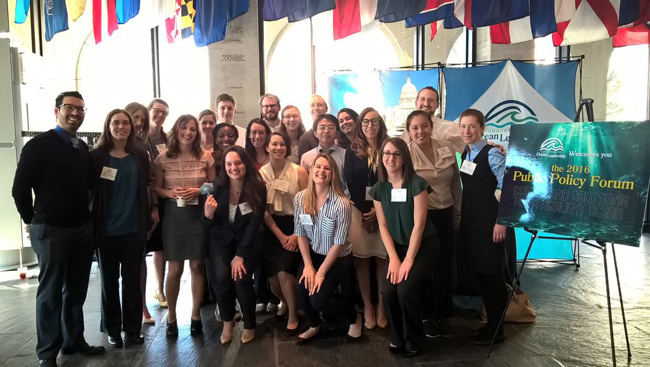
(9) THE LEGACY OF DR. JOHN KNAUSS >>> The Knauss fellowship - named after one of Sea Grant's founders, John A. Knauss - matches highly qualified graduate students with "hosts" in the legislative and executive branch of government located in the Washington, D.C. area, for a one year paid fellowship: http://ow.ly/nGK130auBUR.
ALSO: In 2016, NYSG's Knauss Fellow Erin Eastwood brought her international experience to NOAA's Climate Program Office: http://ow.ly/10F3he.
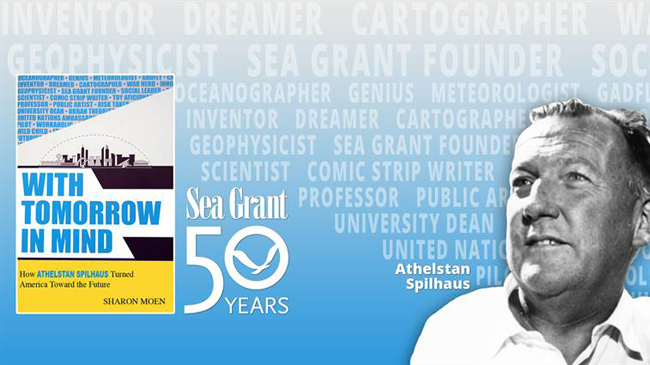
(10) THE FATHER OF SEA GRANT >>> Did you know that The National Oceanic and Atmospheric Administration's National Sea Grant College Program was conceived in the back of a taxi speeding through Minneapolis in 1963? And when its creator, Dr. Athelstan Frederick Spilhaus, met President Kennedy in 1962, JFK told him, “The only science I ever learned was from your comic strip in the Boston Globe.”: http://ow.ly/qUol30auBYp.
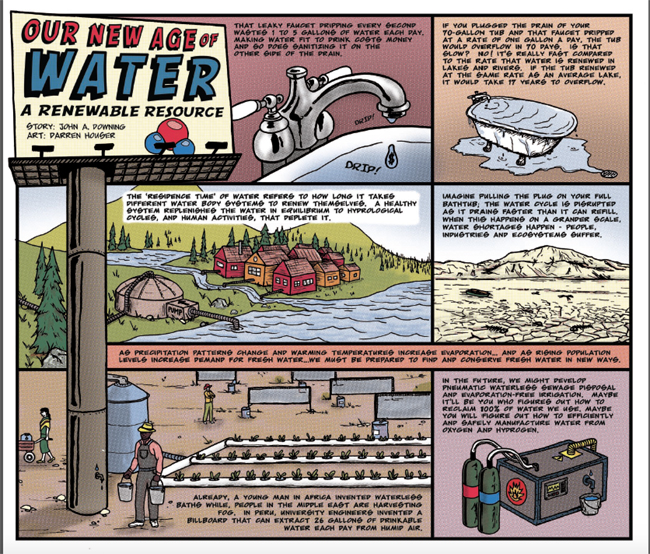
(11) HOW TO BE WATER WISE >>> New York Sea Grant offers home gardeners tips on how to be more water-wise with their landscaping practices in a revised, full color guide. These everyday efforts can help reduce threats to water quality: http://ow.ly/N7oZ30auE4h.
ALSO: Learn more about "What You Can Do" to protect waterways, see Long Island Sound Study's resources, http://ow.ly/sm5N30auE5D.
(12) E-NEWS SIGN-UP >>> Check out an archive of our newsletter, NY Coastlines / Currents, the latest of which was e-distributed Summer 2016: www.nyseagrant.org/nycoastlines. While you're there, you can also sign up (if you haven't already done so) to receive our next issue, slated for release in Spring / Summer 2017.
Top 12 Trending News Stories from NOAA ...
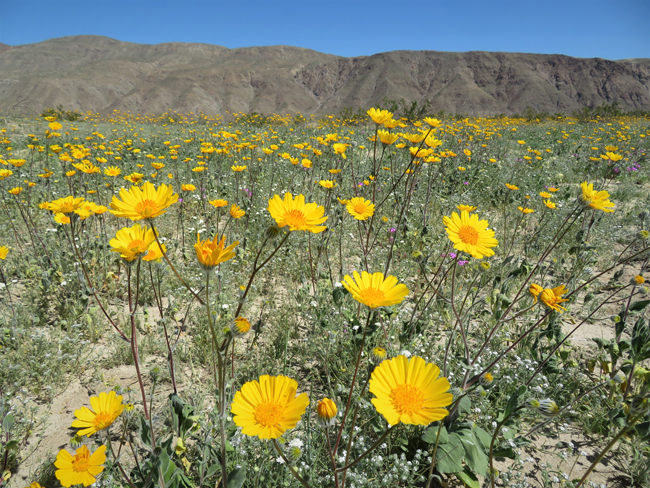
Wildflowers blooming in Anza Borrego Desert Park on March 12, 2017. Photo by Kyle Magnuson, via Creative Commons license.
(1) FROM DROUGHT TO SUPERBLOOM >>> As NOAA Climate.gov reports, following years of exceptional drought, California's southeastern deserts were awash in a superbloom of short-lived but spectacular wildflowers in March 2017: http://ow.ly/s2gW30auC0Q.
ALSO: According to the March 28th U.S. Drought Monitor, moderate to extreme drought covers 14.2% of the contiguous United States, a decrease from last week’s 16.0%. Areas in extreme drought also decreased from 0.4% last week to 0.2%. No areas were in exceptional drought, the worst category: http://ow.ly/bJAE30auC34.
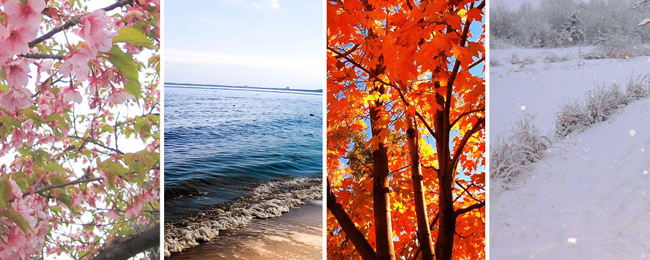
(2) WINTER SETS STAGE FOR SPRING >>> Watch NOAA Climate.gov's highlights video (https://youtu.be/GxV8P9k6A2o) on 2017's spring climate and flood outlook (http://ow.ly/9KWJ30auC7m). In a mid-March Spring Outlook press conference, NOAA announced that warmer-than-average temperatures are favored in much of the U.S. this spring: http://bit.ly/2mSMrVL.
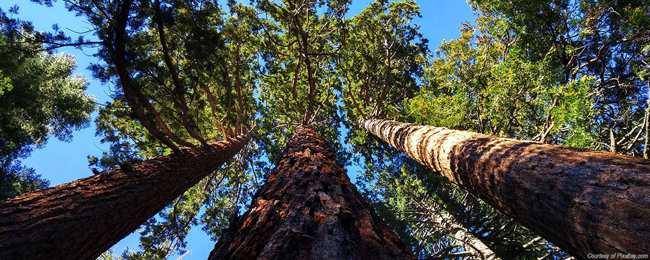
ALSO: What was the world’s climate like 1,000 years ago? Or even 10,000 years ago? Paleoclimatology, the study of ancient climates, can help you learn more about our bygone climates: http://bit.ly/2mfiobv.

(3) GLOBAL & U.S. CLIMATE >>> A Global climate analysis as of February 2017 was released in mid-March by NOAA's National Centers for Environmental Information - Climate. This was the second warmest February, season, and year to date on record: http://ow.ly/f1zM30auC9X.
In early March, NOAA released its U.S. State of the Climate Report, which notes selected significant climate anomalies and events as well as average temperatures and precipitation nationwide in February: http://ow.ly/Dqay30auCe3.
ALSO: When it come to temperatures, what does 2017 look like in your neck of the woods?: http://ow.ly/FbTJ30auEAF.
(4) ENDANGERED OCEAN >>> NOAA Ocean Today offers "Endangered Ocean," a video supplemental resource series for educators: http://ow.ly/UZpL30auCfQ.
ALSO: Teaching climate? With NOAA Climate.gov's interactive NOAA Sea Level Trends map, students can investigate sea level changes around the U.S. and the world: http://ow.ly/TMrA30auChF.
(5) SEASONAL SHIFT >>> Although spring officially sprung around March 20th, the season began over 20 days earlier for meteorologists and climatologists. Learn more about the differences between the astronomical and meteorological seasons: http://bit.ly/2n2Fyl6.
ALSO: See some seasonal extremes with NOAA Climate.gov's sliding visual featuring colorful data points on the coldest and warmest first days of spring: http://ow.ly/bxYw30auCj1.
AND: Now that the 2016-2017 winter is over with, it's time to look back and see how NOAA Climate.gov did with its Winter Outlook: http://ow.ly/3lTQ30auCkW.
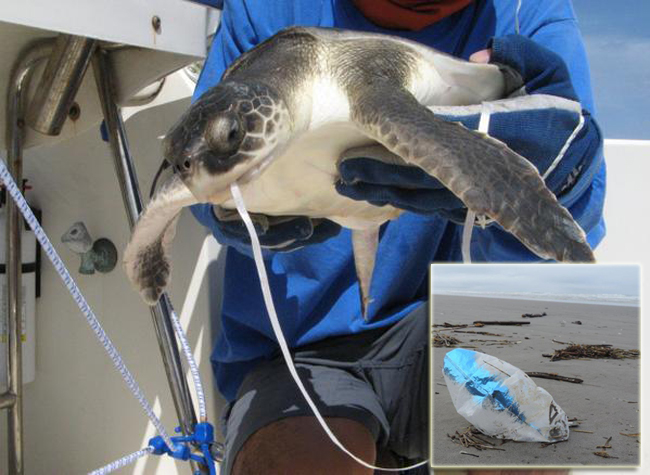
Balloons that are intentionally or accidentally released have to come down somewhere. Unfortunately, they often find their way into our waterways or ocean. (Insert photo). Photo Credit: Russ Lewis. Balloon debris can be harmful for wildlife, which may ingest or get entangled in it. Here, a sea turtle was found after ingesting balloon debris, likely mistaking it for food. (Lead photo). Photo Credit: Blair Witherington, Florida Fish and Wildlife Conservation Commission.
(6) KEEPING BALLOONS AT BAY >>> Balloons released into the air don’t just go away. They eventually fall back to earth, and can even become marine debris. Find out why balloons debris are bad news for animals and communities, especially in the Mid-Atlantic: http://ow.ly/gHIM30auCmN.
(7) RESTORING COASTAL HABITATS >>> Did you know that NOAA’s Restoration Center has been restoring habitat for 25 years? During that time, they've restored more than 130,000 acres of habitat — marshes, wetlands, rivers, barrier islands, and more — ultimately leading to healthier, more abundant fish: http://ow.ly/fipd30auCoH.
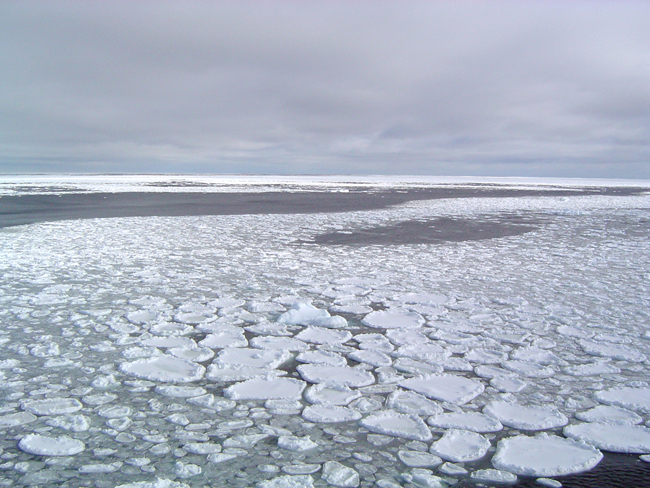
Sea ice can take on a variety of textures. When waves buffet the freezing ocean surface, characteristic "pancake" sea ice forms. This sea ice was photographed near Antarctica. Photo Credit: Ted Scambos, NSIDC.
(8) ICE MELT >>> Unprecedented #Arctic weather has scientists on edge, as sea ice on track for lowest maximum amount on record: http://ow.ly/1Xb030auCpZ.
ALSO: Research shows ocean acidification is spreading rapidly in the Arctic: http://ow.ly/7AWX30auCrS.
(9) HEED THE WARNINGS >>> As NOAA's National Weather Service reminds, there are many ways you can receive weather warnings. Check www.weather.gov for what you can expect today.
(10) YOU CAN PITCH IN >>> Do you love environmental science? Want to make a difference? Become a NOAA Citizen Scientist -- There are lots of volunteer opportunities and ways to contribute: http://bit.ly/NOAACitizenSci.
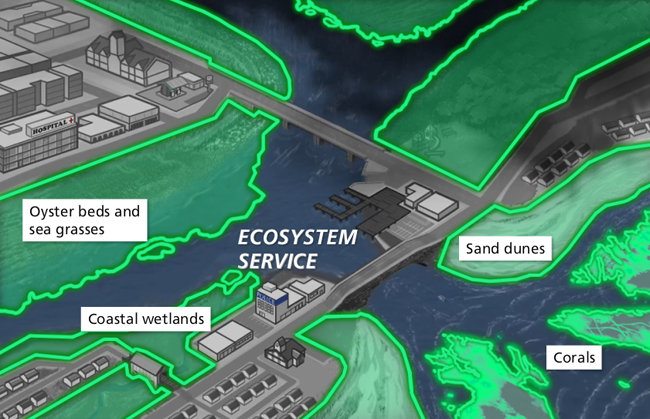
(11) GREEN INFRASTRUCTURE >>> Learn more about how nature protects our coastal communities in an animation from NOAA Digital Coast: http://go.usa.gov/x97CY.
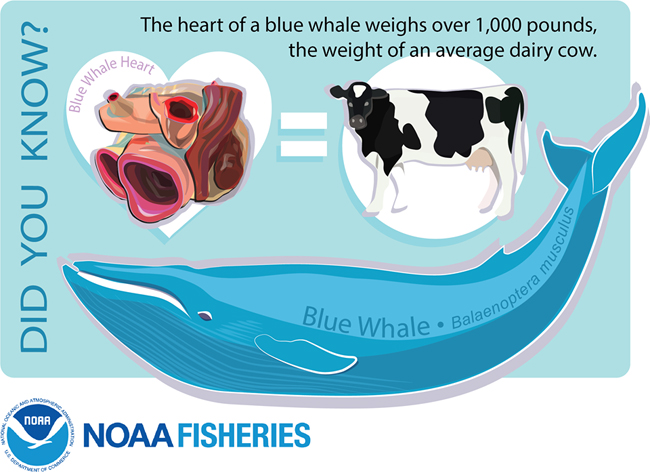
(12) WHALE OF A HEART >>> Did you know that blue whales have the biggest hearts on the planet? http://ow.ly/IJDu30auCta.
---
On www.nyseagrant.org ...
- Our "Trending Topics," such as climate change and green tips for coastal living, via a section on our homepage, www.nyseagrant.org.
- For the latest news from NYSG, check out our 'Currents' section, www.nyseagrant.org/currents, as well as our 'by-topic' archives, www.nyseagrant.org/currentsarchive.
- To keep tabs on all of NYSG's coastal science news, follow us on Facebook (www.facebook.com/nyseagrant), Twitter (www.twitter.com/nyseagrant) and YouTube (www.youtube.com/nyseagrant); Subscribe to our free news feeds (click the orange & white icon in the "Follow Us" navigation bar at www.nyseagrant.org); Sign up for our e-list in a few quick clicks at www.nyseagrant.org/nycoastlines. Our flagship publication, NY Coastlines / Currents, is published 1-2 times a year.
|